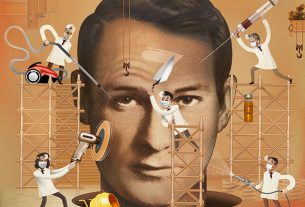A recent research by the IISc has shown how to make HIV -1 virus inactive by increasing the rate of mutation, bringing close, a potential treatment for AIDS.
Of the two main types of HIV, HIV-1 is the most common and HIV-2 is relatively uncommon and less infectious. AIDS refers to the set of symptoms caused by the HIV virus.
Currently, AIDS has no cure or treatment.
Increasing the mutation rate—which is the alteration of a genetic material of an organism—in the HIV-1 virus beyond a certain limit—termed error catastrophe—makes the virus inactive and thus harmless to its host. This strategy is being explored as a potential treatment for AIDS.
This method was tried before in an experiment done by James I. Mullins of the University of Washington in Seattle, Washington. But the study resulted in no consistent change in the virus and it still remained lethal to the body.
Researchers at IISc tried this approach but with a focus on the technical specifics to achieve the desired result. The researchers looked into accurately estimating the rate of mutation that would be needed to make the virus dormant. The rate of mutation is increased by subjecting the virus to a mutagen–a chemical that changes the genetic material of an organism beyond its natural level.
The study also paid attention to the dosage of mutagen that is required to ensure that the desired rate is reached. It also explained why the earlier experiment had failed.
The study found that HIV-1 experiences a sharp transition to error catastrophe when the mutation is increased by 2–6 fold higher than its natural mutation rate.
In total, a 50-fold increase in the mutation rate would be required to induce an error catastrophe. But this cannot be achieved in 125 days, which was the time the earlier experiment had lasted for and thus not enough to make the virus inactive. The study also identified the particular mutagen—called KP1212—which would be required to reach the rate at which the virus can reach an error catastrophe as it concluded the mutagen used in the earlier experiment wasn’t strong enough to reach the desired frequency level. The researchers found this mutagen increased the mutational frequency by 40-90 percent.
Sushmita Poddar who is also working on HIV-1 therapy at the Uniklinik Freiburg in Germany said that “The paper shows promise in making the virus lose its infectivity but the time period is something that would need to be worked out as it is not defined.”
HIV is a virus that attacks the body’s immune system, which is its natural defense against illness. The virus destroys a type of white blood cell in the immune system called a T-helper cell and makes copies of itself inside these cells.
This constant self-copying the virus does gradually breaks down the immune system and thus the ability of the person to fight off diseases. A person is said to have AIDS when their immune system is too weak to fight off infection, and they develop certain defining symptoms and illnesses. This is the last stage of HIV when the infection is very advanced, and if left untreated will lead to death.
But the researchers stated that a potential treatment would require several years to complete. However, Vipul Gupta, one of the researchers said that “Using the mutagens in collaboration with different drugs can reduce the treatment span.”



